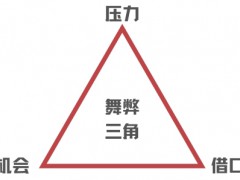据油价网7月11日消息,美国天然气价格自去年疫情引发的暴跌以来已经上涨了一倍多。2021年第二季度,天然气价格飙升了40%,创下了自2016年第二季度以来的最大季度涨幅。
到目前为止,亨利枢纽(Henry Hub)的美国基准天然气价格在每百万英热单位3.6美元以上。极端高温、液化天然气(LNG)出口上升以及天然气库存低于正常水平继续支撑着第三季度初的价格。
展望未来,分析师预计价格波动将会加剧,因为天气模型和预期的热浪将是决定价格走势的关键因素之一。不过,由于价格上涨使煤炭更具竞争力,今年美国发电行业的天然气消费量预计将下降。由于煤炭的主要化石燃料竞争对手天然气价格上涨,部分燃煤发电将在今年夏天出现短期复苏,这将阻碍部分燃气发电。
尽管如此,受美国LNG出口创纪录、国内库存水平较低以及去年冬天和今年夏天的极端天气的影响,天然气价格目前仍然处于2018年12月中旬以来的最高水平。
与此同时,由于石油导向钻井平台的伴生天然气产量下降,美国的天然气产量在最近几个月相对持平。
未来两个季度,天然气价格预计将保持在3美元/百万英热单位以上。美国能源情报署(EIA)在本周公布的7月短期能源展望中称,明年可能出现下行压力,因预计美国天然气产量将增加,且出口增长将放缓。
上周美国天然气价格出现上涨,原因是天然气市场供过于求,以及美国许多地区在比往常更热的天气下预计电力需求旺盛。随着热浪席卷太平洋西北部地区,亨利枢纽的价格回升导致期货价格达到两年多来的最高水平。
本周天气转凉的预期打压了天然气期货,但美国能源情报署(EIA)的每周天然气库存报告具有建设性,并在周四推高了价格。
EIA称,截至7月2日当周,净注入储油总量为160亿立方英尺,低于分析师预测的270亿立方英尺中值,也远低于五年平均净注入630亿立方英尺。
去年这个星期,净注入储油量为570亿立方英尺。截至7月2日,天然气库存总量为25740亿立方英尺,比5年平均水平低1900亿立方英尺,比去年同期低5510亿立方英尺。
到目前为止,在4月至10月的补充季节,注入储存的平均速度也比5年平均水平低17%。
EIA预计,由于创纪录的天然气出口增速将超过天然气产量增速,整个补充季节的注入量将比5年平均水平低5%。
由于电力部门以外天然气需求的上升和出口的增加,亨利枢纽在2021年上半年的平均现货价格为3.25美元/百万英热单位,这也是由于2月份德克萨斯严寒期间价格短暂飙升至5.35美元/百万英热单位所致。
EIA在7月份的短期能源展望(STEO)中预测,亨利枢纽的现货价格将从最近的高点回落。根据EIA的最新估计,第三季度的平均价格预计为3.22美元/百万英热单位,这也是2021年全年的平均价格。
然而,在2021年剩余时间里,天然气价格预计将保持在3美元/百万英热单位以上,“受持续创纪录的天然气出口和电力行业以外的天然气需求上升以及相对平稳的天然气产量的推动。”
EIA预计,明年产量增加和出口增长放缓带来的下行压力将导致亨利枢纽2022年的平均现货价格为3美元/百万英热单位。
裘寅 编译自 油价网
原文如下:
Natural Gas Prices Still Have Room To Run
U.S. natural gas prices have more than doubled since last year’s pandemic-induced slump. Prices surged in the second quarter of 2021 by 40 percent, registering the largest quarterly rise since the second quarter of 2016.
The U.S. benchmark natural gas price at the Henry Hub has traded above $3.60 per million British thermal units (MMBtu) so far in July. Extreme heat, rising liquefied natural gas (LNG) exports, and lower than usual gas stocks in storage continue to support prices at the start of the third quarter.
Going forward, analysts expect higher volatility in prices as weather models and anticipated heat waves will be one of the key factors in determining price actions. Natural gas consumption in U.S. electricity generation, however, is set to decline this year because of the much higher prices, which make coal more competitive. Coal-fired power generation is set for a short-term recovery this summer as higher prices of coal’s main fossil fuel competitor, natural gas, will discourage parts of gas-fired electricity generation.
Still, natural gas prices are currently at their highest since the middle of December 2018, driven by record U.S. LNG exports, low domestic stock levels, and extreme weather both in the past winter and this summer.
Amid all this, natural gas production in the United States has stayed relatively flat in recent months, due to lower production of associated gas from oil-directed rigs.
Natural gas prices are expected to stay above $3/MMBtu in the coming two quarters.
Downward pressure will likely emerge next year because of an expected rise in U.S. natural gas production and a slowdown in export growth, the Energy Information Administration (EIA) said in its Short-Term Energy Outlook for July published this week.
Last week, U.S. natural gas prices jumped amid a tight natural gas market and expectations of high demand for electricity in hotter than usual weather in many parts of the United States. The Henry Hub rally as a heatwave gripped the Pacific Northwest resulted in the highest price for the prompt futures in more than two years.
Expectations of cooler weather this week have weighed on natural gas futures, but the weekly natural gas inventory report from EIA was constructive and sent prices higher on Thursday.
The net injections into storage totaled 16 billion cubic feet (Bcf) for the week ending July 2, below the median analyst estimate of 27 Bcf and well below the five-year average net injections of 63 Bcf, the EIA said.
This week last year net injections into storage stood at 57 Bcf. As of July 2, working natural gas stocks totaled 2,574 Bcf, which is 190 Bcf lower than the five-year average and 551 Bcf lower than last year at this time.
The average rate of injections into storage so far in the refill season April-October is also lower, by 17 percent, compared to the five-year average.
For the whole refill season, the EIA sees injections 5 percent below the five-year average rate because record exports are set to outpace increase in natural gas production.
Rising natural gas demand outside the power sector and higher exports resulted in an average Henry Hub spot price of $3.25/MMBtu in the first half of 2021, also because of the brief spike in prices to $5.35/MMBtu during the Texas Freeze in February.
The Henry Hub spot price is set to drop from recent highs, the EIA forecasts in its July STEO. The average price for the third quarter is expected at $3.22/MMBtu, which will also be the average price for all of 2021, as per EIA’s latest estimates.
However, prices are expected to stay above $3.00/MMBtu for the rest of 2021, “driven by continuing record natural gas exports and rising demand for natural gas outside of the electric power sector amid relatively flat natural gas production.”
Next year, downward pressure from higher production and slowing export growth would lead to average Henry Hub spot price of $3.00/MMBtu in 2022, the EIA reckons.
免责声明:本网转载自其它媒体的文章,目的在于弘扬石化精神,传递更多石化信息,并不代表本网赞同其观点和对其真实性负责,在此我们谨向原作者和原媒体致以敬意。如果您认为本站文章侵犯了您的版权,请与我们联系,我们将第一时间删除。







